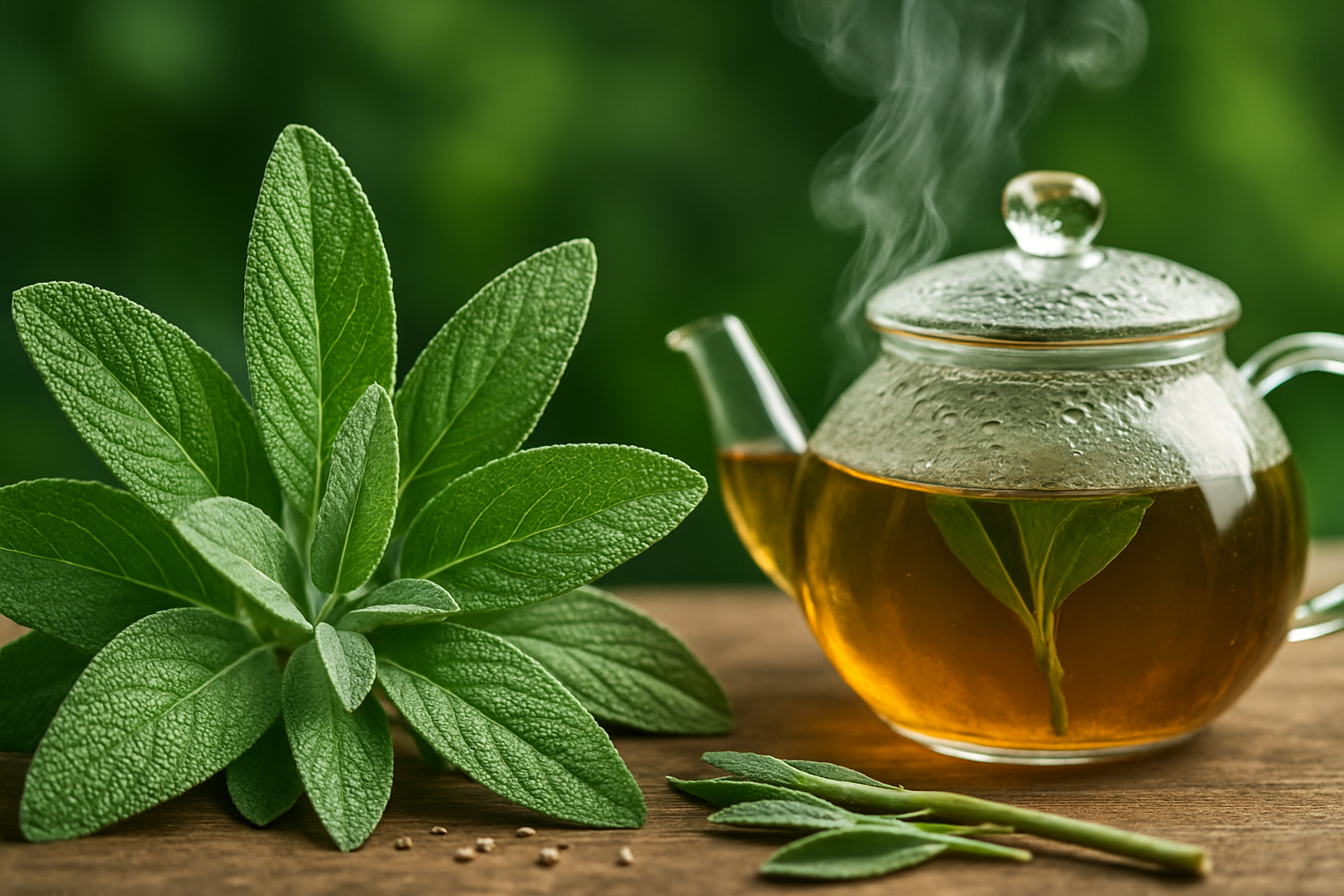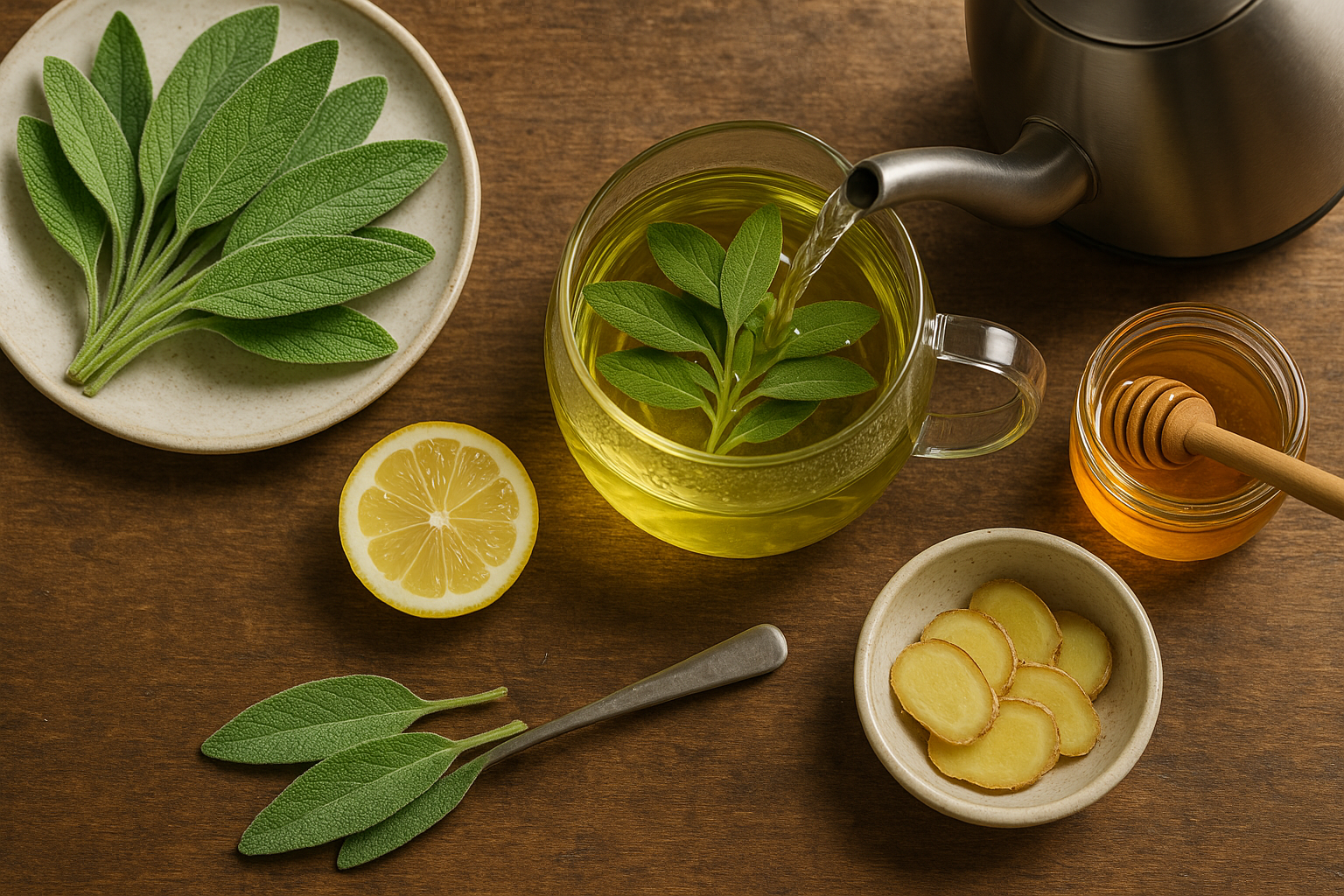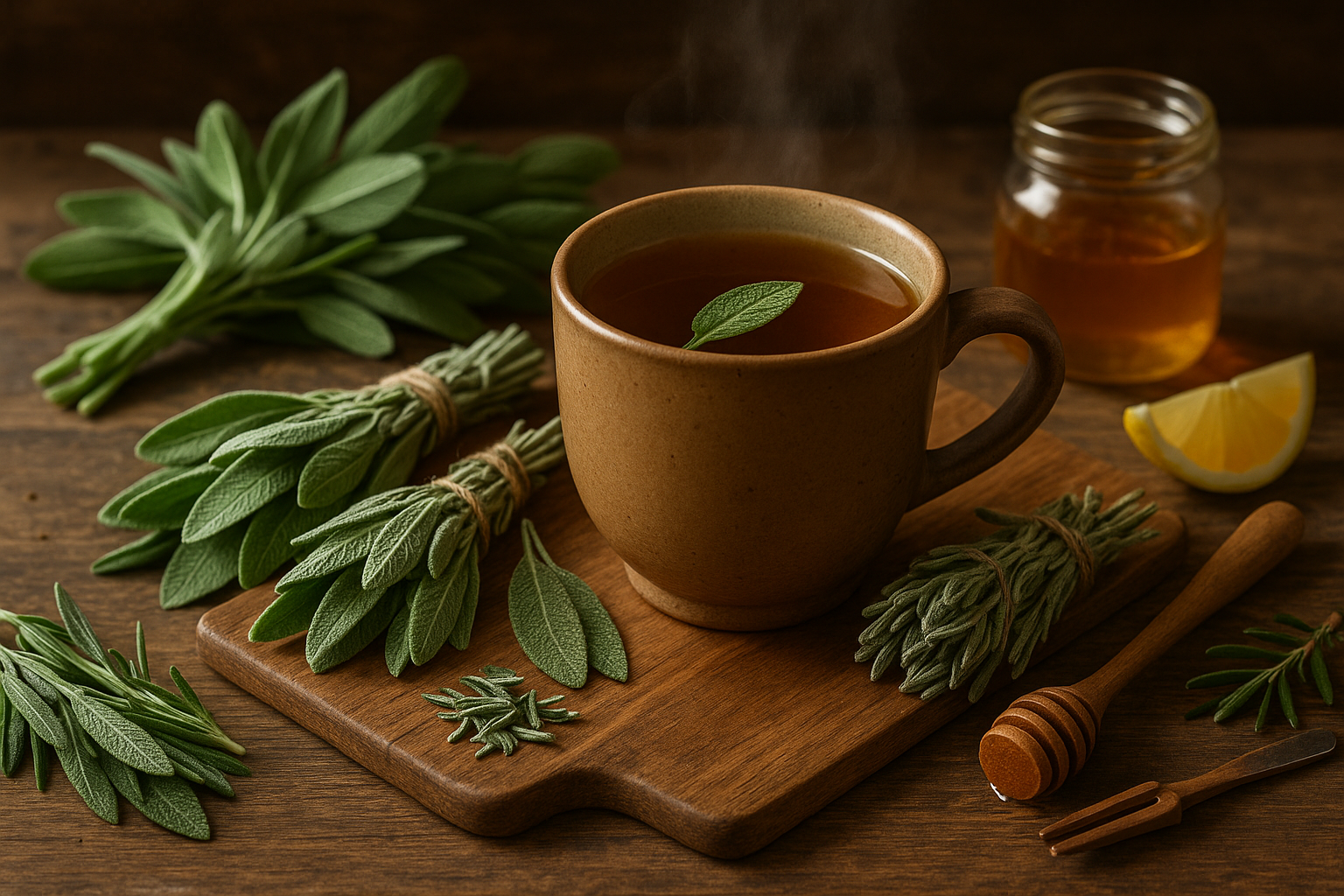Introduction to Sage Tea
Sage tea benefits have captured the interest of wellness seekers worldwide, but this aromatic herbal drink also has deep roots in history. Sage tea is made from the leaves of the sage plant (Salvia officinalis), a perennial herb cherished for centuries in Mediterranean, Middle Eastern, and European cultures—not just as a culinary seasoning but also as a traditional remedy.
In ancient Greece and Rome, for instance, sage was considered a symbol of wisdom and longevity; healers prized it for supporting digestion and soothing sore throats. To prepare sage tea, people typically steep fresh or dried sage leaves in boiling water, sometimes combining them with honey or lemon for flavor and added wellness effects. This simple method allows the beneficial oils and compounds in sage to infuse into the water, creating a fragrant, earthy brew.
Today, the growing spotlight on natural health solutions has revived curiosity about sage tea benefits, with modern research exploring its possible roles in supporting cognitive health, reducing inflammation, and providing antioxidant support. Whether sipped as a comforting bedtime ritual or used to soothe an itchy throat, sage tea offers a flavorful way to tap into centuries-old herbal wisdom while embracing its potential science-backed perks.
Key Health Benefits of Sage Tea

Sage tea has earned its reputation as a health booster, and research supports many of its traditional uses. Packed with powerful antioxidants like rosmarinic acid and flavonoids, sage tea may help neutralize free radicals, supporting your body’s natural defenses and reducing inflammation. This is great news for anyone looking to ease symptoms of chronic inflammatory conditions or simply boost daily wellness.
Sage’s cognitive benefits are also gaining attention; studies show that drinking sage tea may improve memory, alertness, and mood, making it a popular drink for students and anyone needing a mental lift.
For digestive health, sage tea has a long history of easing upset stomachs, bloating, and cramps. Try sipping it slowly after a heavy meal to feel relief.
It’s also a go-to remedy for sore throats and mouth inflammation. Its natural antimicrobial properties can help soothe irritation and fight off bacteria, making it a handy addition to your home remedy toolkit.
Another standout benefit is for menopausal women—preliminary research suggests sage tea may help reduce hot flashes and night sweats, offering a gentler alternative to hormone therapy for some.
However, it’s important to note that while promising, many of these benefits require larger and longer-term studies for confirmation. Pregnant women and people with certain medical conditions should consult their doctor before adding sage tea to their routine, as it can interact with medications if consumed in large amounts. As with all herbal remedies, moderation and informed use are key.
Nutritional Profile and Active Compounds
Sage leaves are packed with a powerful blend of nutrients and active compounds that set them apart from many other herbs. Rich in vitamins A, C, and K, as well as important minerals like calcium, magnesium, and iron, sage supports immune health, bone strength, and cellular function.
What really makes sage unique are its bioactive compounds—especially flavonoids such as luteolin and apigenin, along with potent essential oils including thujone, cineole, and camphor. These substances act as strong antioxidants, protecting the body from oxidative stress and inflammation.
Sage’s essential oils also have antimicrobial qualities, which help defend against certain bacteria and fungi. This is one reason sage tea is often sipped for sore throats or digestive upset.
Unlike many other herbal teas, sage contains rosmarinic acid, which has been linked to improved cognitive function and memory, offering a brain-boosting edge that few other teas provide.
For those seeking a natural way to support their health, brewing a cup of sage tea is a simple and effective daily ritual—you get a distinctive earthy flavor plus a boost of nutrients not found in more common herbal teas like chamomile or peppermint.
Homemade Sage Tea vs. Store-Bought Options
Making sage tea at home with fresh or dried leaves delivers a full, robust flavor that commercial tea bags often can’t match. When you brew loose sage—especially if it’s freshly picked from your garden or sourced from a reputable market—you’ll notice a stronger aroma and earthier taste that feels closer to nature. Homemade tea also lets you control the potency: simply adjust the number of leaves to your liking.
In contrast, store-bought sage tea bags prioritize convenience. Just add hot water and you’re ready to sip, making them a smart choice for those pressed for time. However, tea bags may contain smaller, less potent leaf particles and sometimes include additives or fillers to enhance shelf life or flavor; always check the ingredients list for unwanted extras.
If you’re making sage tea at home, pick leaves that are vibrant and free of brown spots—dried sage should be fragrant and green-gray, not dull or faded. For pre-packaged teas, look for brands that list “100% sage” without artificial additives and opt for organic whenever possible. Whether you choose DIY or ready-made, paying attention to quality ensures you get the best flavor and benefits from your sage tea.
How to Make Sage Tea at Home

Making sage tea at home is simple and only takes a few steps. Start by rinsing 4-5 fresh sage leaves (or use 1 teaspoon of dried sage) and placing them in a cup or teapot. Boil water and let it cool for about a minute, since sage is best steeped in water that’s hot but not boiling (around 200°F/93°C).
Pour the water over the leaves and cover your cup or teapot to trap the steam and flavor—let the tea steep for 5 to 7 minutes. If you prefer a milder cup, use fewer leaves or shorten the steeping time.
For a boost of flavor and health benefits, add a slice of lemon, a few thin slices of fresh ginger, or a spoonful of honey after steeping. Sage naturally has an earthy, slightly peppery flavor, but these additions help brighten and balance the tea.
Strain out the leaves and enjoy hot, or let the tea cool and pour it over ice for a refreshing iced version. If you have leftovers, store the tea in a covered container in the fridge for up to 24 hours; flavor is freshest within the first day.
Always experiment to find your ideal strength and blend of add-ins—everyone’s perfect sage tea is a little different!
Precautions, Side Effects, and Who Should Avoid Sage Tea
While sage tea is generally safe for most people when enjoyed in moderation, there are a few important precautions to keep in mind. Drinking large amounts—more than three to six cups a day—can cause side effects such as a rapid heart rate, dry mouth, dizziness, or even seizures in extreme cases. This is mainly due to a compound called thujone, which can be toxic at high doses.
If you’re taking medications for diabetes, high blood pressure, or sedatives, be cautious: sage tea might interact with these drugs, affecting their potency or causing side effects. Pregnant or breastfeeding women are usually advised to avoid sage tea, as certain compounds could harm both mother and baby.
People with hormone-sensitive conditions, like breast cancer or endometriosis, should also steer clear, since sage can mimic estrogen in the body. If you have epilepsy or a seizure disorder, avoid sage altogether because of the risk from its thujone content.
Always talk with your healthcare provider before adding herbal teas to your routine, especially if you have chronic health issues. Enjoying sage tea occasionally can be a pleasant experience, but moderation and medical guidance are key to safe use.
